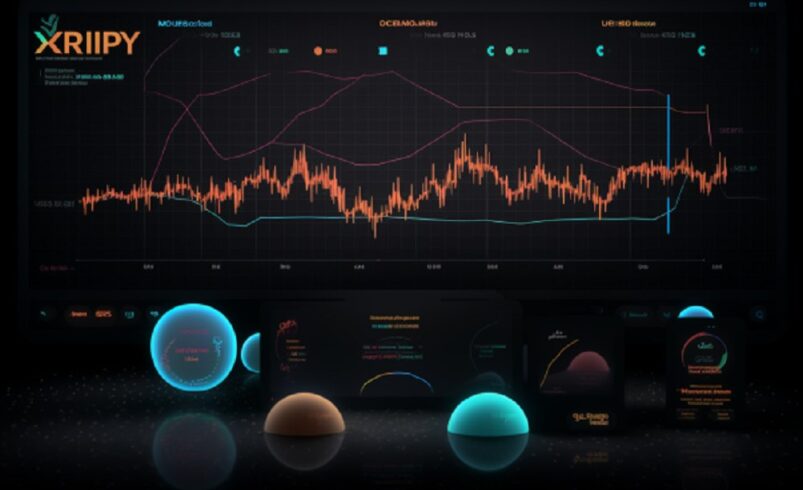Strategies For Increasing Crypto Rewards Besides HODLing

Cryptocurrency investors often categorize their holdings into short-term and long-term holds. The former involves assets held for brief periods, while the latter is for extended durations, regardless of price fluctuations.
However, there are avenues to garner additional returns from long-term holds beyond the conventional method. This guide explores five strategies to enhance asset yield earmarked for a long-term HODL.
Stake Long-Term Holds
Numerous blockchain platforms employ a Proof-of-Stake (PoS) consensus method, where users either stake their tokens or assign their stake to a node holder. This action enables them to earn a share of the block rewards.
Prominently, three of the top 10 altcoins by market capitalization employ this system, offering users an annual percentage yield (APY) ranging from 3-7% at present rates. Notably, rewards are dispensed in the staked cryptocurrency, enabling users to compound their interest effortlessly.
Additionally, various blockchain projects extend beyond staking programs. These programs are built on smart contracts, incentivizing users to hold tokens for an extended period, reducing their circulating supply.
Although they may yield higher rewards, they often have heightened token volatility. Typically, these programs enforce fixed lockup periods, such as 30, 60, or 180 days, with more extended lockup periods to yield higher rewards.
Liquid staking solutions like Lido and Rocket Pool are often utilized to optimize capital efficiency. However, it’s important to note that while blockchain-level staking is generally considered secure, individual project-level staking programs may not be as safe due to smart contract vulnerabilities.
Hence, assessing whether your long-term holds offer a staking program can be a prudent move to augment your balance as you await favorable exit conditions for the tokens you’ve staked.
Become A Liquidity Provider
Decentralized exchanges (DEXs) have emerged as pivotal platforms for cryptocurrency traders and investors seeking to sidestep the constraints of centralized alternatives. Hence, such platforms necessitate a mechanism to source liquidity for trading activities.
Typically, decentralized exchanges (DEXes) function with a permissionless pool system, allowing users to deposit multiple assets to facilitate trading liquidity. These contributors, referred to as liquidity providers, receive a portion of the trading fees on the DEX, similar to how market makers operate on centralized platforms.
Many DEXes are available across popular layer-1 and layer-2 platforms, supporting permissionless liquidity provision for volatile asset pools and stablecoins. Even though it is vital to acknowledge the potential risk of impermanent loss (IL), some platforms, such as DODO and SmarDex, claim to have a solution to avert this concern.
While potential yields vary by platform and pool, they generally fall within the 1-10% per annum range.
Join A Yield Farm
Another way to optimize capital efficiency is by staking their LP tokens in a yield farm. Yield farms are platforms that facilitate the accrual of additional yields by staking LP tokens, offered in addition to gains from trading fees on the provided liquidity.
Usually, these returns are distributed using the yield farm’s governance or utility token or through a decentralized exchange (DEX). For example, individuals using PancakeSwap can deposit their LP tokens in farms to acquire extra yields in the form of CAKE tokens.
Many prominent layer-1 and some layer-2 platforms offer various yield farming options. A common strategy involves liquidating the yields from these farms to bolster the original liquidity and farm position, which compounds the returns.
Remember that newer yield farms may offer higher rewards but often come with increased risk. Always exercise caution and exclusively utilize platforms that have undergone a rigorous security audit.
Use A Crypto Savings Account
Similar to traditional banks offering interest on fiat deposits, platforms now exist for earning yield on idle digital assets. These platforms permit users to earn a yield with no mandated lock-in period.
This makes it flexible to withdraw funds and accrued interest at any time. These platforms typically operate as centralized entities and may require users to complete KYC verification for account creation.
Users might come across specific deposit limits, both minimum and maximum, depending on their location or the assets they choose. Typically, these platforms loan out user funds to institutional borrowers with an over-collateralized approach, then distribute most of the fees to the depositors.
Become A Lender
The advent of decentralized finance (DeFi) has ushered in a range of permissionless alternatives to traditional financial services. Open lending platforms have gained significant traction due to their advantages over centralized counterparts, including superior interest rates, enhanced accessibility, and a lack of credit checks due to over-collateralization.
Almost anyone can partake as a lender by contributing to a permissionless lending pool through one of these platforms. Borrowers can then secure loans using a fraction of the pooled funds, paying interest for subsequent distribution among lenders based on their share.
The yields stakers, or investors should expect depends on the selected platform and asset, spanning from a small fraction of a percentage to more than a 10% Annual Percentage Yield (APY). However, if the user’s loan-to-value ratio exceeds a predetermined limit, multiple open lending platforms compel over-collateralization and automated procedures to liquidate borrower deposits.
However, like most DApps, open lending platforms are susceptible to smart contract risks. Prioritizing platforms with a proven security track record may be prudent, even if they offer slightly lower yields.
Final Thought
While HODLing remains a fundamental strategy, leveraging these additional approaches can optimize capital efficiency and yield for long-term holds. Each method carries its risk profile, emphasizing the importance of thorough research and due diligence before implementation.
TradeZoneCrypto.com offers high-quality content catering to crypto enthusiasts. We’re dedicated to providing a platform for crypto companies to enhance their brand exposure. Please note that cryptocurrencies and digital tokens are highly volatile. It’s essential to conduct thorough research before making any investment decisions. Some of the posts on this website may be guest posts or paid posts not authored by our team, and their views do not necessarily represent the views of this website. TradeZoneCrypto.com is not responsible for the content, accuracy, quality, advertising, products, or any other content posted on the site.









